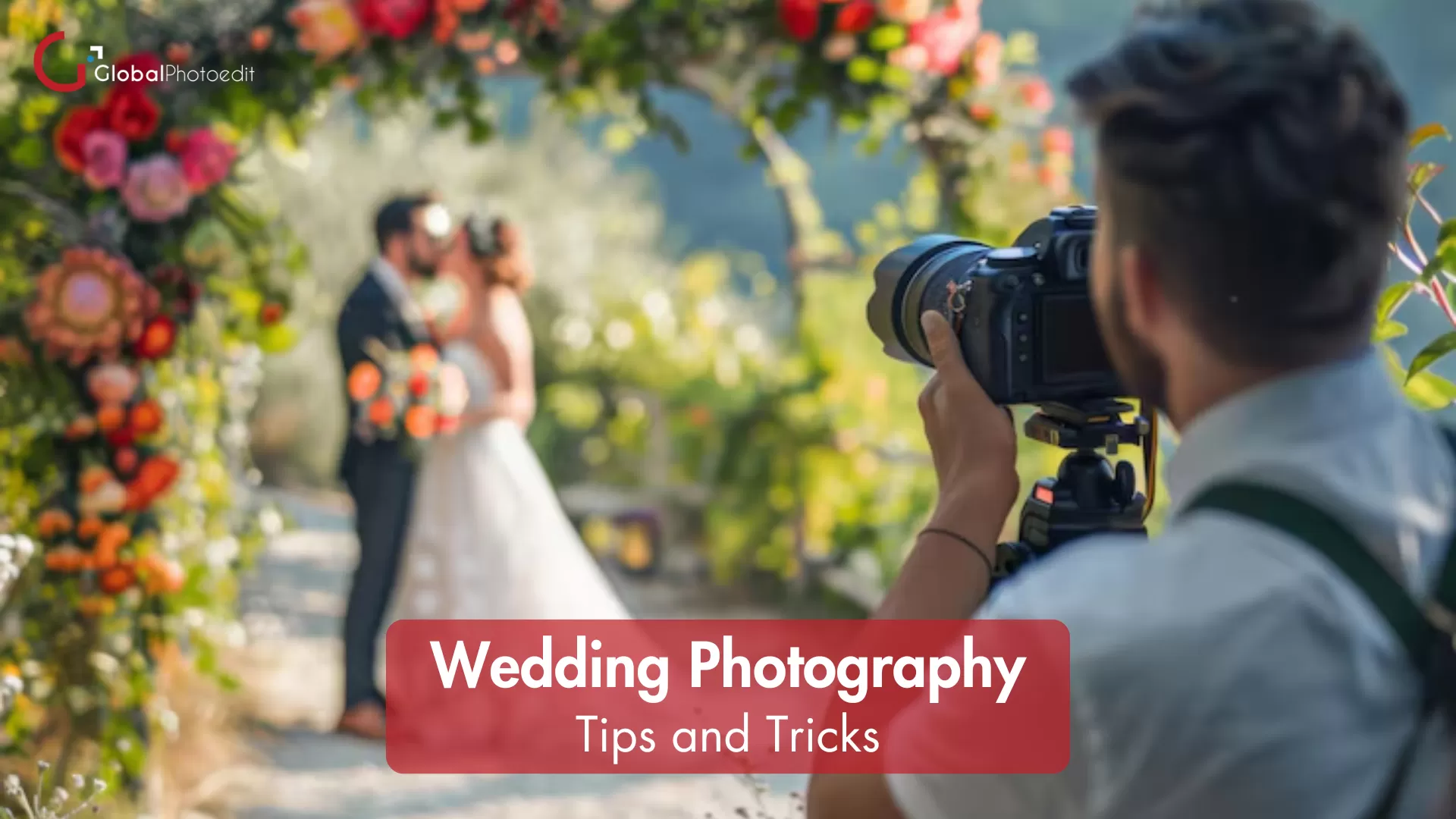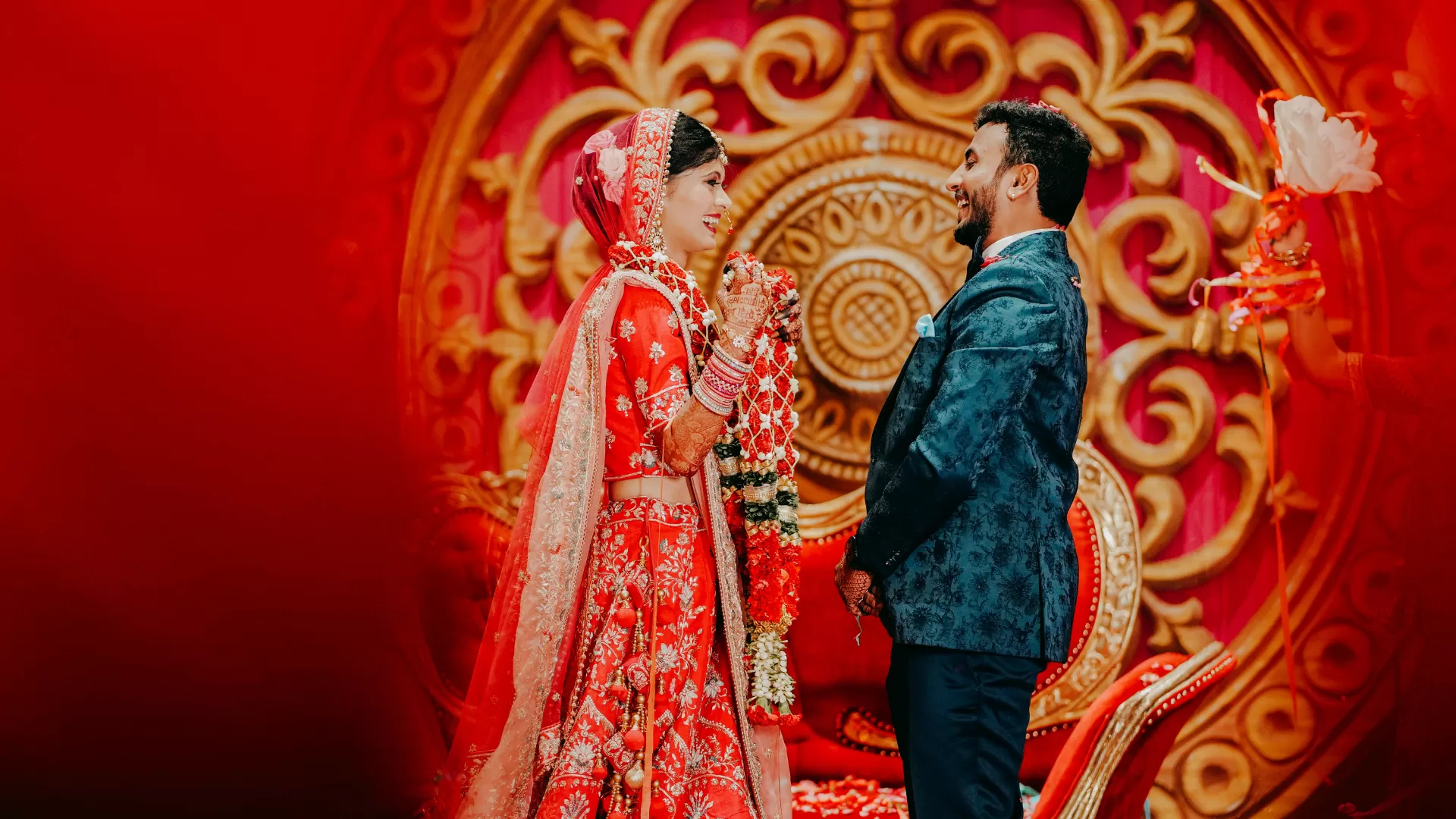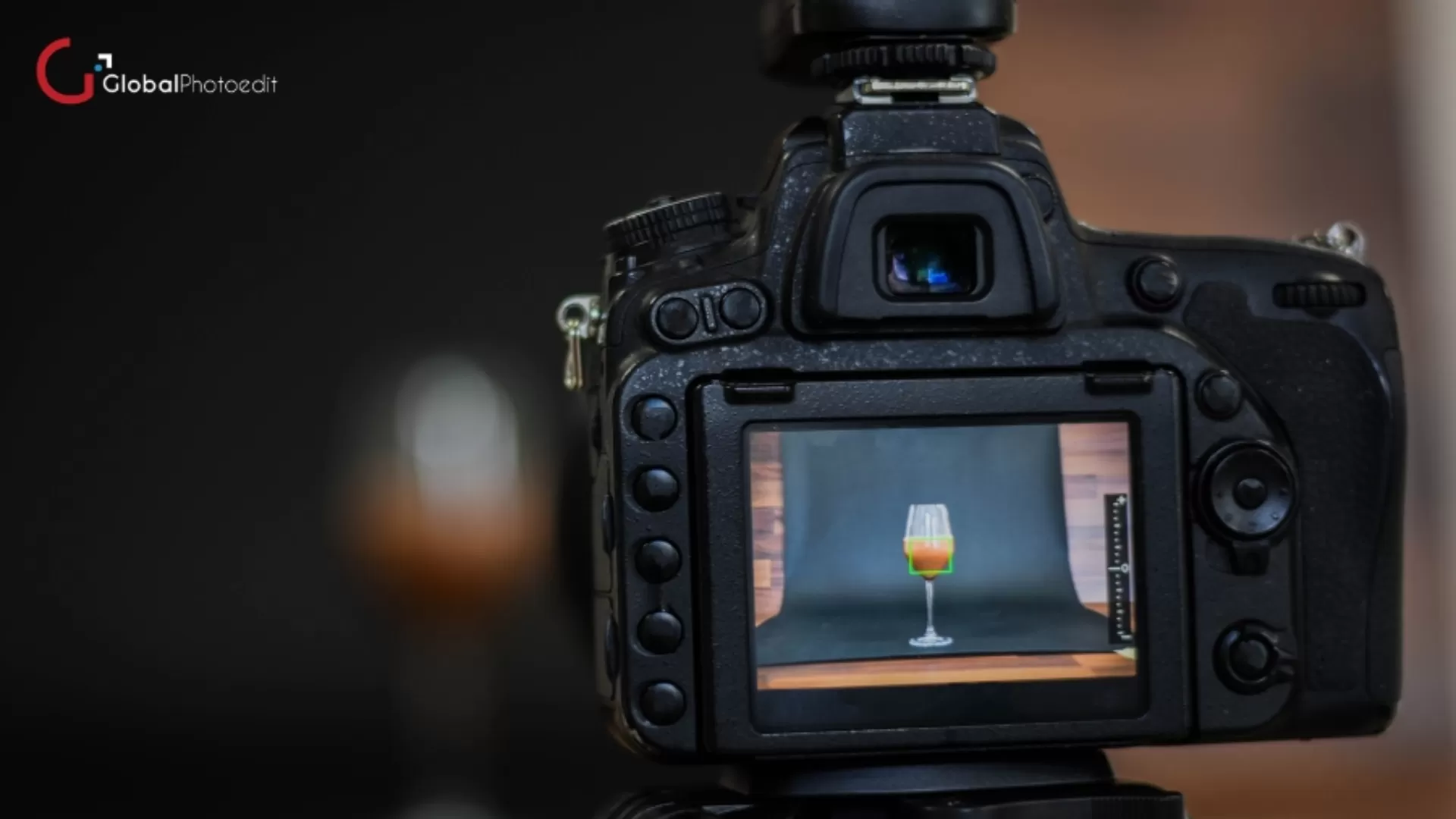Wedding Photography Tips and Tricks for Beginners
Wedding photography is actually one of the most sought and rewarding niches. Probably, capturing some of the very important days of couples’ lives can be done, not only showing technical skill, but also one has to find oneself in the right place at the right moment. For this reason, when a beginner steps into wedding photography, it sometimes feels overwhelming. However, with the right knowledge and preparation, you can successfully navigate this field and create stunning, timeless photographs.
In this blog, we’ll explore key wedding photography tips and tricks that will help beginners develop their skills and build confidence for this exciting yet challenging genre of photography. In case you need wedding photo editing services, reach out to Global Photo Edit.
1. Know the Couple’s Expectations
The world of wedding photography calls for first understanding what the couple wants for their wedding photos. The couple is always different and their preference unique; therefore, one should try to understand their visions for creating the right style of images.
First consultation: Meeting the couple to talk over the style and feel they are looking for with their wedding pictures. Candid, traditional poses, or a combination of both? All this will set the stage and guide your way when shooting the wedding.
Create a Shot List: Provide the couple with a list of absolute must-haves, such as key family members, groups, and particular details they might want captured. This way, you won’t miss anything significant on the rushed wedding day.
2. Scout the Venue Beforehand
Familiarity with the wedding venue is crucial. If possible, visit the venue before the wedding day to scope out the locations where you’ll be shooting. Pay attention to lighting conditions, angles, and potential obstacles that could impact your shots. Knowing the venue will help you get the right picture, and post. In case, your photos require editing, or retouching- reach out to Global Photo Edit, and avail our wedding photo retouching services.
Lighting: Weddings can take place in various places-from outdoor ceremonies to dimly lit reception halls. Knowing where the best lighting is-be it natural or artificial-will help you make the right gear and settings choice.
Obstacles: Identify areas that may obstruct your view during key moments, such as pillars, decor, or other guests, and plan accordingly.
Backup Plan: In case of bad weather for outdoor ceremonies or portraits, always have an alternative indoor location in mind.
3. Choose the Right Gear
Though one is not needed to buy the expensive stuff, yet a few important items that complete your kit:
Camera Body: There needs to be a full frame, offering good low-light performances, that has a body and is great to shoot at the pace, ensuring proper focus as well.
Lenses: The best wedding lenses are usually prime lenses (50mm f/1.4, 85mm f/1.8) for portraits and zoom lenses (24-70mm f/2.8) for versatility during the ceremony and reception.
External Flash or Strobe: Lighting can be unpredictable during a wedding. A flash is a great tool to ensure proper exposure in dimly lit settings.
Extra batteries and memory cards: You never know how long the wedding day might take, so having extra power or storage might be a good idea. Extra batteries for your camera and memory cards always help.
Tripod/Monopod: Tripods are not absolutely practical for shooting all those moments of the wedding, but a monopod can help you stabilize your shots when using longer exposures or video work.
4. Basic Composition Mastery
Good composition is what makes great photographs. Mastering the basics will have you taking photos that are full of visual balance and stunning at the same time. Here are some of the most basic concepts to remember:
The Rule of Thirds: Take your frame and divide it into a 3×3 grid. Then place key elements like the bride and groom on those lines or their intersections, and you’re good to go with a far more dynamic composition.
Leading Lines: Use architectural elements, roads, or natural features to lead the viewer’s eye to the couple or to key moments.
Depth: Use foreground elements (such as flowers or decorations) and use the available lighting to create depth in your images.
Framing: Use elements of the environment, such as archways or windows, to frame your subject in a visually appealing way.
5. Be prepared for Candid Moments
While posed portraits are a very important part of wedding photography, candid moments are often the show stealers. Raw, emotional moments between the couple, their families, and friends can tell the real story of the day.
Anticipate the Moment: Learn to read the wedding day energy so you can anticipate key moments such as laughter, tears, or spontaneous gestures. That’s where a great photographer stands apart from the rest of good photographers-to-be able to capture those rare and special moments.
Keep Yourself Steady: A wedding photographer should be like a ghost during some moments, especially during vows, speeches, or intimate moments. Use a long lens to capture these moments without disturbing the flow of the ceremony.
Capture Real Emotions: Do not just capture the couple. Candid moments between guests, parents, and family members add a personal touch to the wedding album.
6. Get the Formal Portraits Right
Even though candid moments are stunning, formal portraits still are a necessary component of wedding photography. Some suggestions on how to pose and guide the couple and the group include the following:
Clear Communication: Educate the couple and the family with simple instructions and keep them comfortable by remaining cool, friendly, and self-assured.
Focus on the Eyes: Ensure that all eyes are open and looking at the camera, especially in group shots. This is often a challenge, so patience and clear communication are key.
Use the Environment: When doing group portraits, try to use the environment creatively. For example, pose the couple near an interesting architectural feature or incorporate the surrounding nature for a more dynamic shot.
Don’t Overpose: While it’s important to direct your subjects, avoid overly staged or stiff poses. Encourage the couple to interact naturally, such as holding hands, laughing, or simply enjoying each other’s company.
For professional wedding photo retouching service, contact team Global Photo Edit.
7. Be Prepared for the Unexpected
Weddings are unpredictable events, and one needs to be prepared for everything. From bad weather to sudden changes in the schedule, one needs to be flexible.
Adapt to Lighting Changes: Light is most likely to change throughout the day, especially when shooting indoors, at sunset, or in adverse conditions. Be prepared and ready to change the settings of the camera as lighting changes.
Capture the Details: Weddings are full of details which tell the story of the couple’s big day. Take time to photograph items such as the rings, bouquet, decor, and wedding dress. These details are important and can add depth to the wedding album.
Stay Calm: Weddings can be chaotic, and things might not go according to plan. If something goes wrong, stay calm and find a solution. Your ability to remain composed will help you stay focused and continue delivering quality photos.
8. Post-Processing and Editing
Once the wedding is over, your work does not end there. It continues with post-processing and editing, where you can enhance the photos and create a cohesive look for the album. You can learn wedding photo editing photoshop, or you can reach out to experts.
Color Grading: The consistency in the edit is the key to getting a professional look. Use a preset or create your own editing style to give the photos a cohesive feel.
Retouching Using tools such as Adobe Lightroom or Photoshop enhances skin tones and removes distractions with lighting adjustments, but over-tightening it is too often the best that can be done.
Timely Delivery: Couples are usually eager to receive their photos; therefore, ensure the final edited images have been produced within an acceptable time frame, which is within 4-6 weeks.
9. Focusing on Client Satisfaction Improves
You know you’re heading in the right direction?when clients tell you how much they love their engagement session and how they will recommend you to their friends. Just make sure to keep client satisfaction your first priority.
If you focus on providing a great experience with amazing photos,?clients tend to recommend you. Simplify it by telling them where you want the review posted and make it simple with a direct?link. You can give clients a thank-you gift for reviews.
Moreover, providing a discount for a future session as a time-limited incentive for clients to?post a review (e.g., within a week) can spur action. This encourages clients to leave testimonials?quickly, while the positive emotions are still fresh.
Make sure to think about incentives for sharing images. For example,?provide credits or bonuses when clients include their images with their review (e.g., a free print or free photo product). Not only does this beautify the review, but it also promotes your work to prospective clients reviewing your?site or social media streams.
10. Timely or Even Early Delivery- Always
Be upfront to your clients about how long they can expect it to take?to process and deliver their photos from the beginning. By setting realistic time frames, it?avoids understandings and ensures positive client relations. With a focus on these fundamentals, photographers can protect their reputation and execute their business?responsibilities.
It is important?to make sure photos are delivered on-time with high standards and it surely improve client satisfaction. Photographers?are required to adhere to the deadlines defined in their contracts. Whether these timeframes are two weeks?long, or up to three months long, proper communication and management of workflows are vital.
Create a seamless post-processing archiving process where you will be able?to handle projects efficiently without compromising on quality. This might mean batch editing photos, using trusted software, or outsourcing?to a wedding photo editing services. There are no excuses for delays, there is plenty of resources out?there that can help improve workflow.
11. Practice Photography, and Its Business Continuously
Finally, the best way to enhance your wedding photography skills is by practicing. The more weddings you shoot, the more experience you will gain in handling different situations. Consider second shooting for an experienced photographer to learn the ropes before taking on your own bookings.
Seasoned wedding photographers understand everything?starts with making the best wedding shots. Now while perfecting family portraits and conquering?gnarly lighting is key, a successful wedding photography business is about so much more than simple techniques.
The first wedding shoot can be daunting but sustaining a long-run career?requires a balance between photography and business. If you want to succeed, you should set a budget, manage?your own finances, and create a marketing plan. Booking your next wedding isn’t just about delivering gorgeous products —?it’s about how well you manage your business.
Pick a business name, a professional website and get the required?licenses. A dedicated email for client communication?is critical. As you scale, get an invoicing system in place, and book things using?attorney-generated contracts.
Conclusion
It is a well-rewarded but challenging genre of photography, which demands understanding, preparation for unknown moments, practice of technical competencies, and a keen talent to capture perfect candid moments- a perfect start towards becoming successful in wedding photography. Above everything, be a patient, hard-working, passionate person who treasures capturing memories through pictures that have the potential of staying forever.
No matter how good you take wedding photographs, there will always be a need for wedding photo retouching services. In that case, remember to contact Global Photo Edit.








